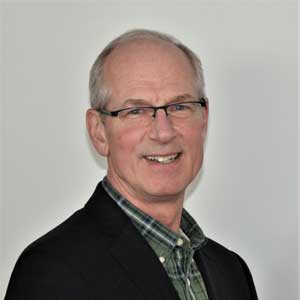 A question that is frequently asked is how well turbines can withstand hurricane force winds. The short answer is that international standards help to ensure that turbines are built to withstand external conditions that may occur over the expected life of the project.
A question that is frequently asked is how well turbines can withstand hurricane force winds. The short answer is that international standards help to ensure that turbines are built to withstand external conditions that may occur over the expected life of the project.By Sandy Butterfield, Boulder Wind Power, USA
In practice, all commercial wind turbines are designed to meet international standards, specifically the International Electrotechnical Commission’s (IEC) 61400 series of standards. These standards have been written over the past 40 years by industry experts operating with IEC Technical Committee (TC) 88 standards.
IEC 61400-1 is the primary design standard that defines the design conditions (external environmental conditions combined with a wide variety of turbine operating conditions) that onshore wind turbines must satisfy in order to meet certification requirements. IEC 61400-3 adds the external conditions that must be considered for offshore designs.
These are used by certification bodies to evaluate whether a turbine design does in fact meet the requirements defined in the standards. Some certification companies have their own internal rules governing how they apply these standards, but the only internationally developed transparent certification system is the newly developed IEC System for Certification to Standards Relating to Equipment for Use in Renewable Energy Applications.
Hurricane conditions are not specifically defined within the standard because they tend to be influenced by local site conditions. Instead, they are treated as extreme conditions on a spectrum of combined weather and sea-state conditions that may be heavily affected by local geographic conditions.
Unique characteristics of hurricanes and guidance on how to address them in the design process are included in informative annexes of the standard. The magnitude of winds, waves and other important design conditions are determined by specific site data.
Every offshore (and onshore) installation is required to specifically define all the external conditions that may occur at that site over the expected life of the project, usually 30 years but no less than 20 years. This requires the project developer to gather historical data for its site and use it to forecast a set of design conditions which projects the extreme winds, waves, currents and any other events that the turbines could experience, including hurricanes.
This is no different than the design requirements for offshore oil and gas rigs. The overwhelming majority of oil and gas rigs survived Hurricane Katrina. Those that did not enabled that industry to re-evaluate their standards and adjust them to meet more severe 100-year events for future installations.
Most offshore and many onshore wind turbines are designed to withstand 70 m/s (157 mph, 252 km/h) winds (IEC Class I). This is greater than most hurricanes. Hurricanes do present the most extreme wind conditions, but they do not present conditions that are impossible to design for.
Jeroen Van Dam, who chairs the IEC TC that develops standards for wind energy generation systems, TC 88, reminds us that the latest revision of IEC 61400-1, which is in its final approval steps, contains a special design class for areas with very high extreme winds, which may result from hurricanes. The new design class raises the extreme wind speed that wind turbines are designed for to about 80 m/s (179 mph, 288 km/h) and allows design for more severe external conditions when needed.
More design challenges may result from combinations of wind (less than the extreme wind) and waves together with certain wind turbine operating conditions. Designers simulate many thousands of these combinations with very sophisticated computer models to assure themselves, certification bodies, regulators and customers that they have indeed addressed all the conditions that could damage the turbines.
This has been proven to work well as there are many examples of wind turbines surviving these extreme conditions, but it was not the case 40 years ago, before standards and refined dynamics models were available. Indeed the standards evolved as a result of turbines failing in extreme wind conditions.
Some countries have their own set of requirements which are a combination of IEC standards plus national standards. In the USA, experts participate in the development of IEC wind energy standards through the American Renewable Energy Standards and Certification Association.
The USA is currently developing a set of statutory requirements for offshore. Industry experts are meeting together under the American Wind Energy Association governed by the American National Standards Institute rules to develop these consensus-based requirements.
Biography
Sandy Butterfield is Founding CEO and Chief Technology Officer of Boulder Wind Power, a pioneer in the US wind industry. He is the Chair of the IEC System for Certification to Standards Relating to Equipment for Use in Renewable Energy Applications.
Sandy Butterfield is Founding CEO and Chief Technology Officer of Boulder Wind Power, a pioneer in the US wind industry. He is the Chair of the IEC System for Certification to Standards Relating to Equipment for Use in Renewable Energy Applications.








